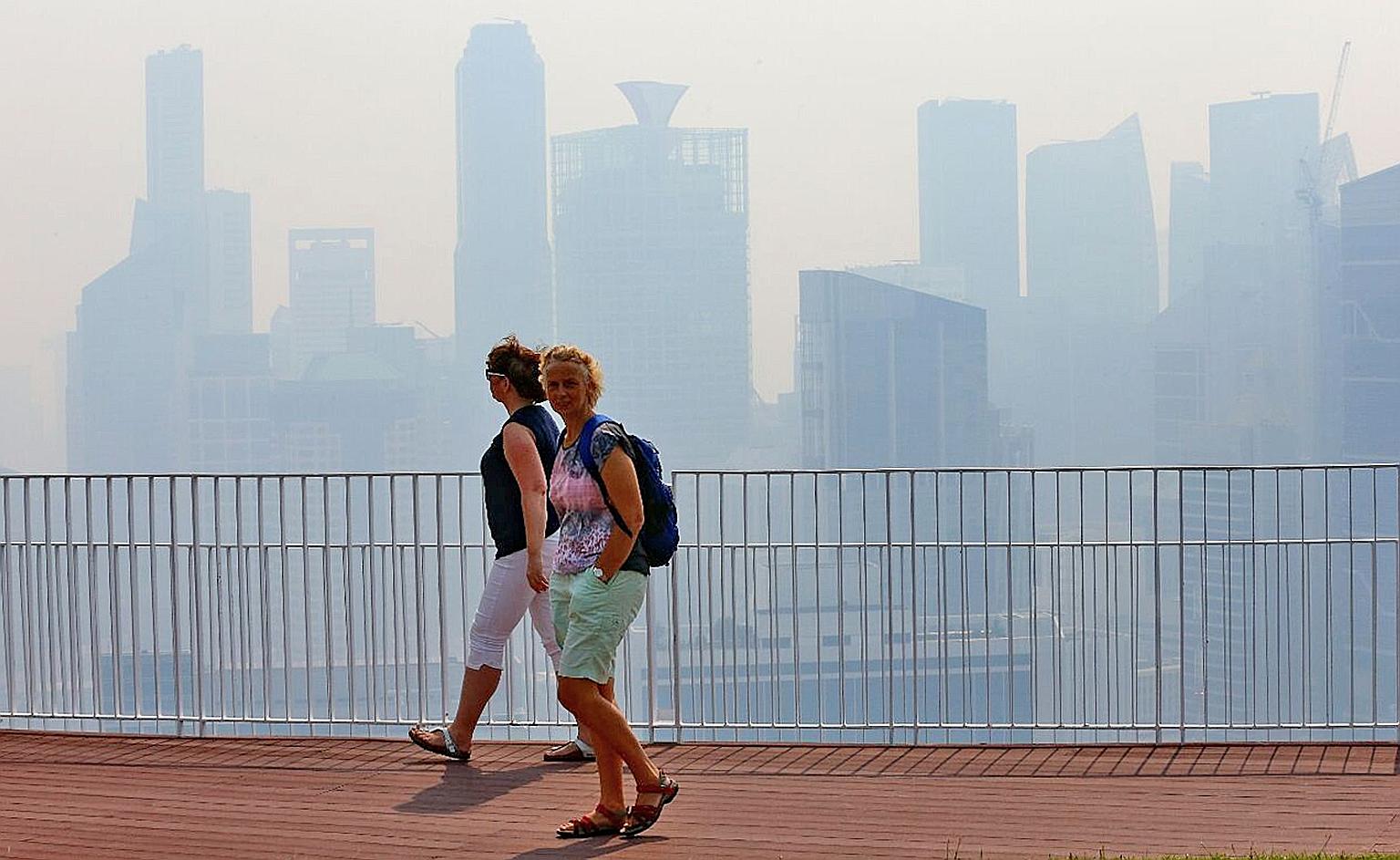Haze: Air quality down to 'unhealthy' for first time this year
Change of wind direction brings smoke and smell from forest fires in Sumatra where 11 hot spots are detected
Sign up now: Get ST's newsletters delivered to your inbox

The view from the skybridge at Pinnacle @ Duxton at 10.45am yesterday. Buildings in the distance were barely visible as winds carried the haze from Sumatra to Singapore. Similar unhealthy conditions are likely to persist today, said the NEA.
ST PHOTO: CHEW SENG KIM
Follow topic:
Singaporeans awoke yesterday to find that familiar burning smell hanging in the air and their view of the city dimmed by the returning haze.
For the first time this year, air quality - as measured by the 24-hour Pollutant Standards Index - hit unhealthy levels at 4pm yesterday, with the western end of the island registering a reading of 105.
The haze that blew in was a result of forest fires on Indonesia's Sumatra island, located to the west of Singapore. Eleven hot spots were detected in Sumatra, said the National Environment Agency (NEA) yesterday.
Similar unhealthy conditions are likely to persist today, said the NEA. It added that its chief executive Ronnie Tay had written to his Indonesian counterpart to register Singapore's concern that air quality could worsen, should the fires continue. In the letter sent yesterday, Mr Tay urged Indonesia to continue taking action to prevent the fires during this dry season. He asked for an update on the situation in Sumatra and Kalimantan.
Malaysia and parts of Indonesia had been affected even earlier. Changing wind patterns caused the haze to reach Singapore only yesterday, said Assistant Professor Winston Chow of the National University of Singapore's geography department. The winds blew from the west yesterday morning, instead of from the south and south-west.
-
PSI readings
The 24-hour Pollutant Standards Index (PSI) measures the average concentration levels of six component pollutants, including the dominant PM2.5, over the given period.
Health studies on haze use this measure so the authorities base health advisories on it.
But as a guide for planning activities during the haze, people should refer to the 1-hour PM2.5 concentrations, which measure current conditions.
There are four bands in all, from normal to very high, though NEA does not state what levels are healthy or not.
But the range of 0 to 55 micrograms per cubic m is described as "normal" while anything above 250 micrograms per cubic m will be described as "very high".
As a guide, the maximum concentration of PM2.5 on a non-hazy day is usually between 20 and 35 micrograms per cubic m.
"The westerly winds brought smoke from the hot spots in central Sumatra to Singapore... The hourly concentration of PM2.5 pollutants was the highest in the west," said Prof Chow.
PM2.5 pollutants are smaller than 2.5 microns in diameter, or a 30th the diameter of a human hair, and are the main pollutants during periods of haze. On a regular day, the maximum concentration of PM2.5 is usually between 20 and 35 micrograms (mcg) per cubic m.
Yesterday, this hit a high of 216 mcg per cubic m at noon. This was still better than last year's haze crisis when, on a particularly bad day, the one-hour PM2.5 concentration soared to 471.
Last year's crisis was the worst on record, because of the El Nino phenomenon linked to dry weather. But the region is expected to get some respite this year when La Nina, associated with more rain in this region, sets in.
"The wetter conditions from La Nina are expected to help douse the fires but international climate models do not indicate that these conditions have kicked in yet," noted Assistant Professor Janice Lee, who studies haze at the Asian School of the Environment at the Nanyang Technological University.

